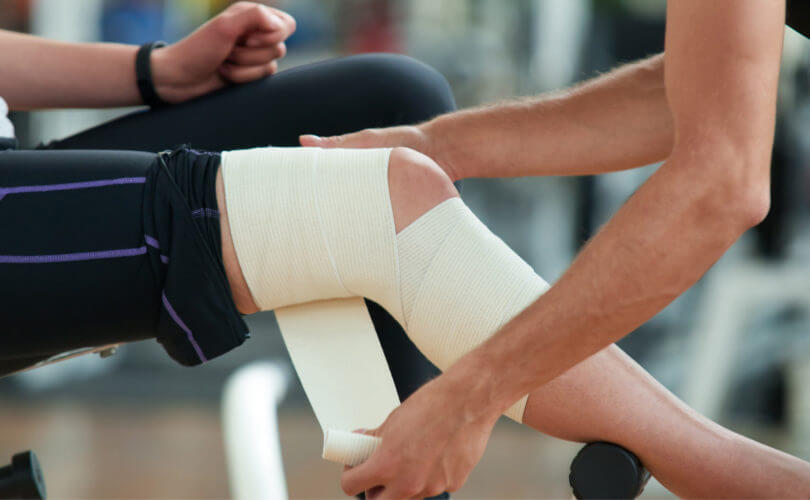Knee pain and discomfort are all too familiar for many individuals, often stemming from a variety of causes, including injuries, overuse, or medical conditions. One of the most vexing issues that can plague the knee joint is the accumulation of fluid within it. This excess fluid, known as knee effusion, can be a source of significant discomfort, hindering mobility and causing distress to those who suffer from it. In this article, we will delve into the essential information on how to get rid of fluid on the knee, exploring the most effective treatments and discussing the common symptoms associated with this condition.

Knee effusion can be caused by a multitude of factors, such as trauma, arthritis, infections, or even underlying medical conditions. Regardless of the root cause, the presence of excess fluid in the knee joint can lead to swelling, stiffness, and pain, significantly affecting one’s quality of life. Understanding the symptoms and seeking appropriate treatment options is crucial for those who wish to find relief and regain control over their knee health.
In this comprehensive guide, we will not only identify the hallmark symptoms of knee effusion but also explore various treatment methods and strategies that can help alleviate this condition. Whether you are a fitness enthusiast looking to get back on track, an individual dealing with chronic knee issues, or someone who has recently experienced a knee injury, this article will provide you with the knowledge and insights you need to address the challenge of fluid on the knee.
From conservative approaches like rest, ice, and physical therapy to more invasive treatments like draining the accumulated fluid or surgical interventions, we will discuss a range of options that can cater to your specific situation. Moreover, we will emphasize the importance of consulting with a medical professional to diagnose the underlying cause of knee effusion accurately, as treatment plans can vary greatly depending on the origin of the condition.
In the following sections, we will explore these treatments in more detail, ensuring that you have the information necessary to make informed decisions about managing and eliminating fluid on the knee. With the right knowledge and care, you can work towards a pain-free and fully functioning knee, restoring your mobility and improving your overall well-being. Let’s embark on this journey to understand how to get rid of fluid on the knee and regain control of your knee health.
Symptoms of Knee Effusion:
To effectively address knee effusion, it is vital to recognize its common symptoms, which often serve as an initial indicator of the issue. These symptoms can vary in severity and may include:
- Swelling: One of the primary signs of knee effusion is noticeable swelling around the knee joint. This swelling can range from mild puffiness to a significant increase in size, making the knee appear larger than usual.
- Pain: Discomfort and pain in and around the knee are frequently associated with knee effusion. The intensity of the pain may vary, ranging from a dull ache to sharp, shooting pains, depending on the underlying cause.
- Stiffness: Knee effusion can lead to reduced range of motion in the affected knee, making it challenging to bend, extend, or fully use the joint. This stiffness can have a considerable impact on everyday activities.
- Warmth: Inflammation often accompanies knee effusion, which can lead to increased warmth or heat around the affected knee. This heat is typically noticeable to the touch.
- Redness: In some cases, the skin over the affected knee may become red or discolored due to the inflammation and increased blood flow.
- Difficulty Walking: As a result of the pain, swelling, and stiffness, individuals with knee effusion may find it difficult to walk or bear weight on the affected leg. This can have a significant impact on their mobility and quality of life.
Understanding these symptoms is crucial for seeking timely medical attention and intervention. If you experience any of these signs, consulting a healthcare professional is highly recommended. Early diagnosis and appropriate treatment can prevent the condition from worsening and improve your chances of a full recovery.
Effective Treatments for Knee Effusion:
The treatment of knee effusion depends on the underlying cause and the severity of the condition. Here are some of the most common treatment approaches:
- R.I.C.E. Therapy: Rest, Ice, Compression, and Elevation (R.I.C.E.) can be effective in reducing swelling and pain. Rest the affected knee, apply ice to reduce inflammation, use compression bandages, and elevate the leg to encourage fluid drainage.
- Physical Therapy: A physical therapist can design a customized exercise program to strengthen the muscles around the knee, improve flexibility, and restore proper joint function.
- Medications: Nonsteroidal anti-inflammatory drugs (NSAIDs) may be prescribed to manage pain and inflammation. In some cases, corticosteroid injections can be used to reduce swelling.
- Aspiration: A doctor may use a needle to aspirate (drain) the excess fluid from the knee. This can provide immediate relief and may be necessary for severe cases.
- Surgery: In instances where the effusion is caused by structural issues within the knee, surgical procedures such as arthroscopy or joint replacement may be recommended.
- Treatment of Underlying Conditions: If an underlying medical condition, such as arthritis or infection, is responsible for the knee effusion, addressing that condition is crucial for long-term relief.
It’s essential to consult with a healthcare professional for a proper diagnosis and treatment plan tailored to your specific situation. Knee effusion is a condition that can be managed effectively, and with the right approach, you can regain your knee’s functionality and enjoy a better quality of life.
In conclusion, knee effusion can be a challenging and painful condition to deal with, but there are numerous treatment options available to address it effectively. By understanding the symptoms and seeking timely medical attention, you can take the first steps towards recovery. Whether through conservative measures or medical interventions, the goal is to eliminate the fluid on the knee, alleviate pain and swelling, and help you return to a life of improved mobility and comfort. Remember, a healthy knee is essential for your overall well-being, and with the right guidance, you can overcome the challenges posed by knee effusion.




